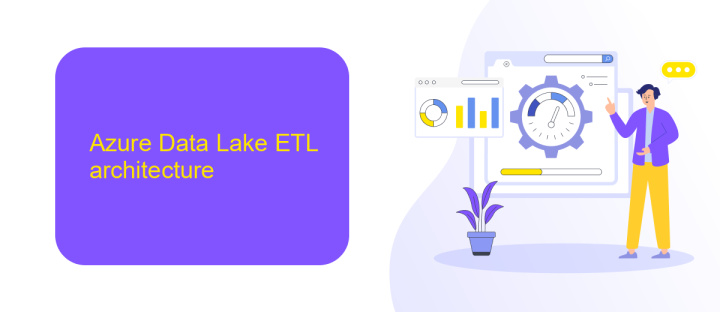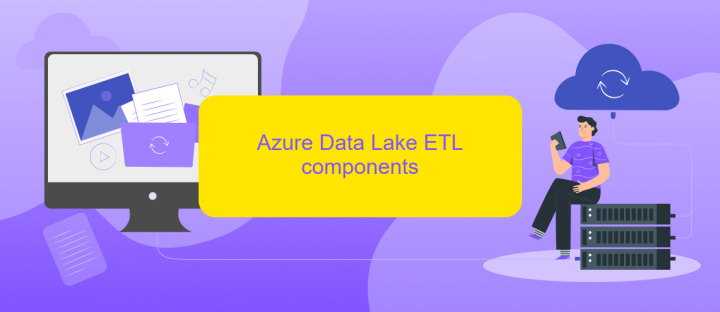Azure Data Lake ETL
Azure Data Lake ETL (Extract, Transform, Load) is a powerful tool for managing and analyzing large volumes of data. It enables organizations to efficiently collect, process, and analyze data from diverse sources, ensuring high performance and scalability. This article explores the key features, benefits, and best practices of using Azure Data Lake ETL to streamline your data workflows and drive actionable insights.
Introduction
Azure Data Lake is a highly scalable and secure data storage and analytics service that allows organizations to manage vast amounts of data. This service is integral for businesses looking to harness the power of big data and derive actionable insights. The process of Extract, Transform, and Load (ETL) is crucial in this ecosystem, as it ensures that data is properly collected, processed, and stored for analysis.
- Extract: Gather data from various sources.
- Transform: Cleanse and modify the data to fit the desired format.
- Load: Store the processed data into Azure Data Lake for analysis.
Integrating various data sources and automating the ETL process can be complex. Tools like ApiX-Drive can simplify these tasks by providing seamless integration capabilities. This service allows businesses to connect different applications and automate data workflows, ensuring that the ETL process is efficient and error-free.
Azure Data Lake ETL architecture

The architecture of Azure Data Lake ETL involves several key components working together to efficiently process and transform large volumes of data. The data ingestion layer is responsible for collecting raw data from various sources, such as databases, IoT devices, and external APIs. This data is then stored in Azure Data Lake Storage, a scalable and secure data repository. The transformation layer, typically implemented using Azure Data Factory or Databricks, processes the raw data through various ETL (Extract, Transform, Load) operations, including data cleaning, normalization, and aggregation.
Once the data is transformed, it is stored in a structured format in Azure Data Lake Storage or other data warehouses like Azure Synapse Analytics for further analysis and reporting. Integration services like ApiX-Drive can be utilized to streamline the data ingestion process by automating the collection of data from multiple sources and ensuring seamless integration with Azure Data Lake. This architecture ensures a robust, scalable, and efficient data pipeline that supports advanced analytics and business intelligence applications.
Azure Data Lake ETL components

Azure Data Lake ETL (Extract, Transform, Load) components are essential for efficiently managing big data workflows. They streamline data processing, ensuring that large volumes of data are accurately and efficiently handled.
- Data Ingestion: This component is responsible for collecting raw data from various sources. Tools like Azure Data Factory and ApiX-Drive can be used to automate and manage data ingestion seamlessly.
- Data Storage: Azure Data Lake Storage provides a scalable and secure environment to store large datasets. It supports various data formats and integrates well with other Azure services.
- Data Processing: This involves transforming raw data into a usable format. Azure Databricks and HDInsight are popular choices for processing large datasets efficiently.
- Data Orchestration: Tools like Azure Data Factory enable the scheduling and monitoring of ETL workflows, ensuring smooth data flow between components.
- Data Integration: ApiX-Drive can be utilized to integrate data from different sources, making it easier to combine and analyze data across platforms.
By leveraging these components, organizations can optimize their data workflows, ensuring accurate and timely data processing. The integration of services like ApiX-Drive further enhances the capabilities of Azure Data Lake ETL, providing a robust solution for data management.
How to use Azure Data Lake ETL

Azure Data Lake ETL (Extract, Transform, Load) is a powerful tool for managing large volumes of data. To get started, first create an Azure Data Lake Storage account. This will serve as the repository for your raw data. Next, configure Azure Data Factory, which orchestrates the ETL process.
Once you have your storage and factory set up, you can begin defining data pipelines. These pipelines will extract data from various sources, transform it according to your business rules, and load it into the Data Lake. Azure Data Factory supports a wide range of data sources and destinations, making it highly versatile.
- Create an Azure Data Lake Storage account
- Set up Azure Data Factory
- Define data pipelines for ETL processes
- Monitor and manage your data pipelines
For easier integration with various data sources, consider using ApiX-Drive. This service can automate data transfers between applications, allowing you to focus on data analysis rather than data integration. By leveraging these tools, you can efficiently manage and analyze your data within Azure Data Lake.
- Automate the work of an online store or landing
- Empower through integration
- Don't spend money on programmers and integrators
- Save time by automating routine tasks
Conclusion
In conclusion, Azure Data Lake ETL provides a robust and scalable solution for managing and processing large volumes of data. By leveraging its advanced capabilities, businesses can streamline their data workflows, enhance data quality, and gain valuable insights. The integration of various Azure services, such as Azure Data Factory and Azure Databricks, ensures that data transformation and movement are seamless, efficient, and secure.
Moreover, integrating third-party services like ApiX-Drive can further optimize your ETL processes by automating data transfers and synchronizing data across multiple platforms. This not only reduces manual efforts but also minimizes the risk of errors, ensuring that your data is always up-to-date and accurate. Ultimately, adopting Azure Data Lake ETL and complementary tools like ApiX-Drive empowers organizations to make data-driven decisions with confidence and agility.
FAQ
What is Azure Data Lake ETL?
How do I automate ETL processes in Azure Data Lake?
What are the benefits of using Azure Data Lake for ETL?
Can I use Python for ETL in Azure Data Lake?
How do I ensure data quality in my ETL process?
Do you want to achieve your goals in business, career and life faster and better? Do it with ApiX-Drive – a tool that will remove a significant part of the routine from workflows and free up additional time to achieve your goals. Test the capabilities of Apix-Drive for free – see for yourself the effectiveness of the tool.


